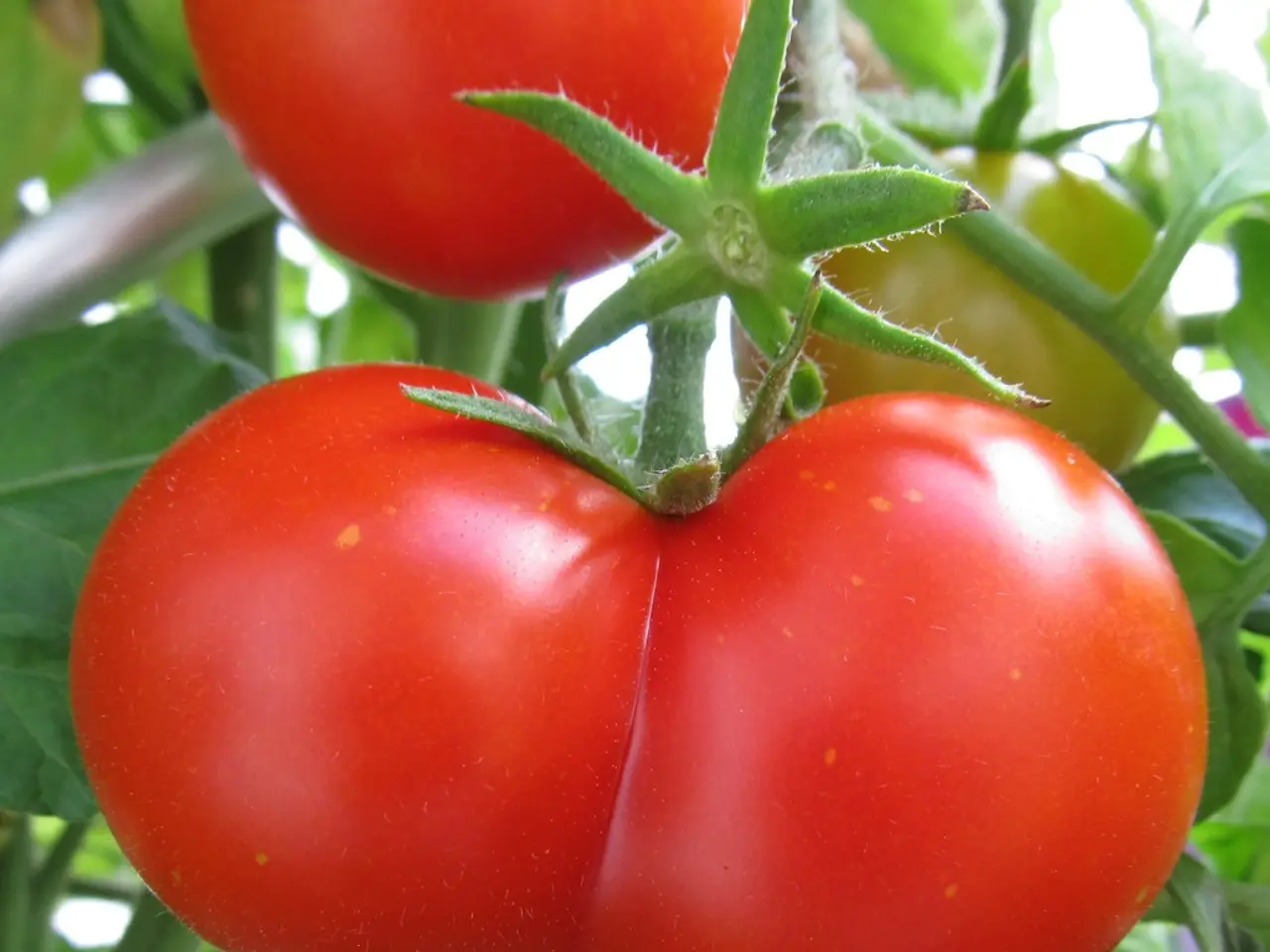Strategies for Shielding Tomatoes from Severe Heat Exposure
In the summer months, tomato plants can face significant stress from extreme heat. To help protect these plants and improve their survival and yield, gardeners should focus on strategic shading, maintaining consistent soil moisture, and adjusting their gardening schedule.
Shading Strategies
One effective method is using 30-40% shade cloth made of knitted polyethylene. This material offers optimal heat and light reduction without overly limiting tomato growth. For very hot climates, a higher density shade cloth (50%+) may be necessary, but it could slightly reduce yield. It's best to install the shade cloth outside the greenhouse or over garden beds before the hottest season begins for the best effect.
Living shade methods, such as companion planting with taller, heat-tolerant plants like sunflowers or corn, and vertical gardening with trellised climbers, can also provide natural shade walls. Positioning tomato beds where they receive morning sun but afternoon shade, such as on the east side of a building or fence, can help avoid the most intense afternoon heat. Lightweight bed sheets or similar white fabric can serve as temporary, effective shade covers during heat waves.
Maintaining Soil Moisture
Watering deeply and thoroughly during the early morning hours, when temperatures are cooler, can reduce evaporation and allow better soil moisture absorption. Drip irrigation or soaker hoses are efficient options for targeted watering at the root zone, minimizing water loss. Applying an organic mulch layer around plants, such as compost, leaves, or grass clippings, can help shade the soil, keep it cooler, and reduce evaporation. Containers made from clay or ceramic pots can also help retain moisture and keep soil temperatures down.
Adjusting Gardening Schedule
Avoid fertilizing tomato plants during extreme heat (above 85–90ºF) as it stresses plants and increases water demand. Resume fertilization after temperatures moderate. Time watering for early morning or late evening to avoid mid-afternoon when water evaporates too quickly. If possible, plan your planting or peak production to avoid the hottest months, or use retractable shade systems to adapt to fluctuating daily temperatures.
By combining these shading, watering, and scheduling tactics, gardeners can significantly reduce heat stress on tomato plants and improve their survival and yield during periods of extreme heat.
Sources: [1] University of California Agriculture and Natural Resources [2] North Carolina State University Extension [3] Missouri Botanical Garden [4] Colorado State University Extension [5] Oregon State University Extension Service
Incorporating shade solutions such as shade cloths, companion planting, and vertical gardening can be part of a strategic approach to manage the lifestyle of tomato plants in the food-and-drink sector, ensuring they thrive even in challenging home-and-garden conditions. Additionally, watering techniques like early morning irrigation, the use of organic mulch, and efficient drip irrigation systems can help maintain optimal moisture levels, further enhancing the yield of these plants during extreme heat.








